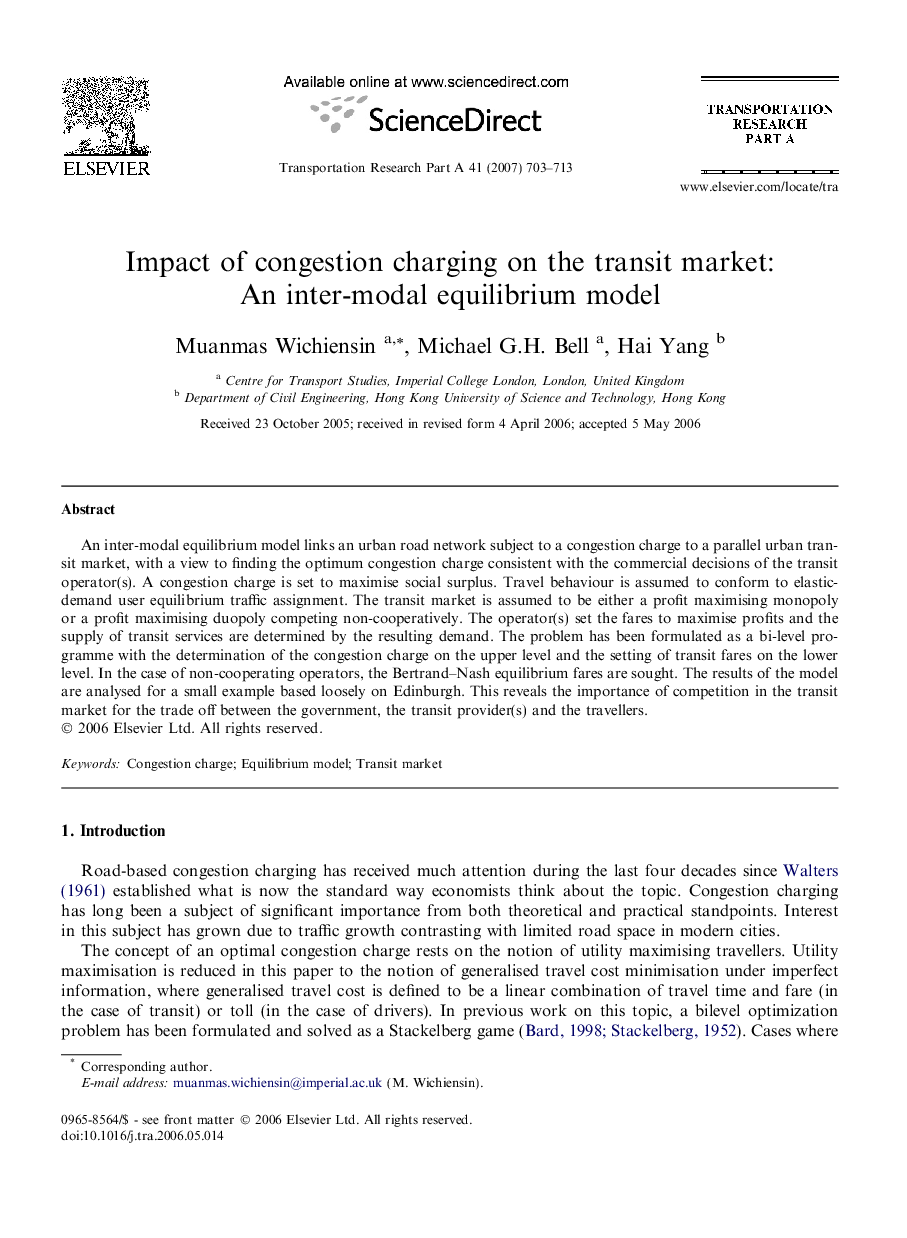| Article ID | Journal | Published Year | Pages | File Type |
|---|---|---|---|---|
| 310557 | Transportation Research Part A: Policy and Practice | 2007 | 11 Pages |
An inter-modal equilibrium model links an urban road network subject to a congestion charge to a parallel urban transit market, with a view to finding the optimum congestion charge consistent with the commercial decisions of the transit operator(s). A congestion charge is set to maximise social surplus. Travel behaviour is assumed to conform to elastic-demand user equilibrium traffic assignment. The transit market is assumed to be either a profit maximising monopoly or a profit maximising duopoly competing non-cooperatively. The operator(s) set the fares to maximise profits and the supply of transit services are determined by the resulting demand. The problem has been formulated as a bi-level programme with the determination of the congestion charge on the upper level and the setting of transit fares on the lower level. In the case of non-cooperating operators, the Bertrand–Nash equilibrium fares are sought. The results of the model are analysed for a small example based loosely on Edinburgh. This reveals the importance of competition in the transit market for the trade off between the government, the transit provider(s) and the travellers.
